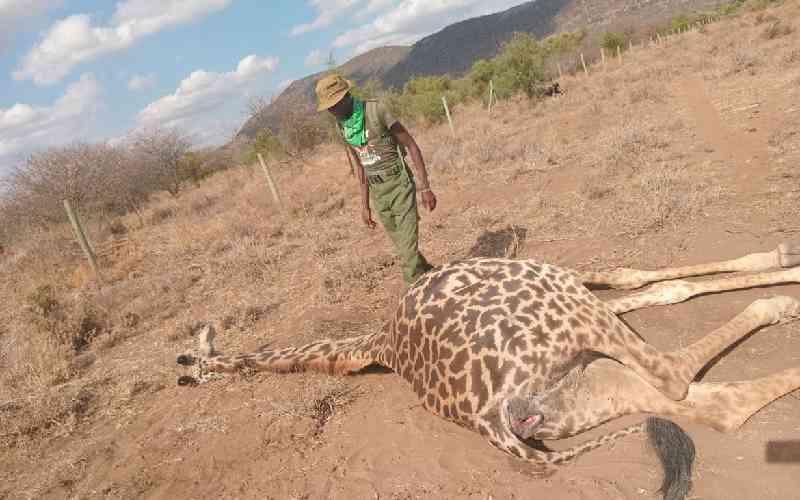From Artic to Serbia, Patagonia to Philippines and Botswana to Kenya there is the emergence of individuals, conservationists, and charities buying up swathes of unprotected land in the name of preserving the ecosystem.
But is this the best practice to save the environment?
In May 2019, residents of Isiolo took to the streets to demand the immediate termination of Northern Rangeland Trust (NRT) conservancy operations in the county claiming they amounted to modern-day imperialism.
The concept of the green economy - defined as one that results in improved human well-being and social equity while reducing environmental risks - has been the talk of many for decades since the 1980s.
The emergence of green market economics that reshaped the use and repair of the ecosystem through privatisation, commodification and state redistribution of public resources to the private venture capitalist is slowly changing the structural use of land and livelihood activities.
The pricing and valuation of ecosystems for environmental ends were first coined by a Guardian journalist John Vidal in 2008 as ‘green grabs as an appropriation of resource for environment ends.’
Recent protests
The view by Vidal seems to resonate with the recent protests against NRT, a consortium of conservancies that operates in the vast arid and semi-arid part of northern Kenya.
The Trust covers 42,000 square kilometers, hosts 39 member conservancies and cuts across five counties perceived to have been marginalised since colonial times.
Critics of NRT says its activities have severely affected livelihood patterns, caused dispossession and further poverty among the already poor resource users. It has also led to conflicts between different pastoral communities and pushed them out of their ancestral lands.
The main and initial goal of conservation policy is the need to ensure that communities live well with the wildlife around them as well as preserving the environment.
But then, did the high-end ecosystem capitalist consider doing a feasibility study on the traditional background of natural resource governance and coexistence with wildlife long before the advent of NRT?
The political economy of the green market has taken a divergent path as it moves from the initial progressive thinking of conservation to pushing local communities from their ancestral lands and perpetuating further marginalisation.
The move towards green market reforms can only be sustainable and yield the desired results when the principles of justice and local inclusivity, transparency and accountability, optimal public participation, ethics, and values are observed.
But this is not happening, judging from the current wave of abrasions between the indigenous pastoral communities and the new venture conservationist.
Stay informed. Subscribe to our newsletter
Grazing zones
Conservancies have been accused of limiting grazing zones. The accumulation of conservancy lands excludes locals from its ownership and pushes local claimants to the periphery.
This, and many more, points to the simmering land crisis under the guise of wildlife conservation. In as much as the advocates of conservation argue that the policy options to conserve wildlife provide a win-win condition by offering job opportunities to residents, scholarship and grants, the situation on the ground is different.
The conservation policy approach by institutionalising of conservancies is viewed by many residents are a smokescreen for grabbing community land.
This has reverberated across Eastern and Central Africa, Asia and Latin America, where locals are have been displaced in the name of conservation measures, eco-tourism initiatives and carbon credits. Imperative to these cross-cutting issues is local participation, adherence to human rights and optimal decision making based on the people’s fair and informed consent.
There are many actors involved, ranging from locals to transnational entities resulting in diverse implications, social and political consequences. How can the principles of justice and inclusivity re-emerge? Is green-grab or other adverse possible results an inevitable agenda?
There is a need to reflect on the common and casual issues being floated as a possible responses to the distorted form of green economy, for instance land reforms. The large-scale handover of the community lands to private ventures infringed on the rights and distorted their livelihoods.
There is a need to have an overarching framework on land policy and regulation, such as adjudication of community lands which takes a complex and messy prevailing land-based issues. The indigenous community ought to have use, control and access over its land.
To ensure sustainable green markets, there is a need to do a profound analysis of the prevailing indigenous community governance arrangement as well as their approach to resource use and control.
Experts like Melissa Leach argue that to arrive at justifiable green market-based economies, upholding the principles of equity and fostering participation is crucial. We need to adopt a different trajectory, from forward-mapping to backward mapping (bottom-up), through the strengthening of local relations.
In Kenya, the initial idea of conservancies like NRT was to ensure wildlife conservation and green growth anecdotes, but today the green narrative has changed as there are nodes of local resistance. This explicitly indicates a disconnect between the local view of the conservation of the ecosystem and the practices on the ground.
Further, NRT institutionalisation strategies show how green agendas are riding on the wave of a poor governance arrangement, inadequate land reforms and dysfunctional overlaps.
It is imperative to understand the drivers and the motive behind such massive investment schemes in Africa and their potential outcomes for the poor peasant and pastoral communities as well as governance at the national level.
Mr Malicha is a Policy Analyst. wario.malicha@gmail.com @werrioh (Twitter)
 The Standard Group Plc is a
multi-media organization with investments in media platforms spanning newspaper
print operations, television, radio broadcasting, digital and online services. The
Standard Group is recognized as a leading multi-media house in Kenya with a key
influence in matters of national and international interest.
The Standard Group Plc is a
multi-media organization with investments in media platforms spanning newspaper
print operations, television, radio broadcasting, digital and online services. The
Standard Group is recognized as a leading multi-media house in Kenya with a key
influence in matters of national and international interest.
 The Standard Group Plc is a
multi-media organization with investments in media platforms spanning newspaper
print operations, television, radio broadcasting, digital and online services. The
Standard Group is recognized as a leading multi-media house in Kenya with a key
influence in matters of national and international interest.
The Standard Group Plc is a
multi-media organization with investments in media platforms spanning newspaper
print operations, television, radio broadcasting, digital and online services. The
Standard Group is recognized as a leading multi-media house in Kenya with a key
influence in matters of national and international interest.





